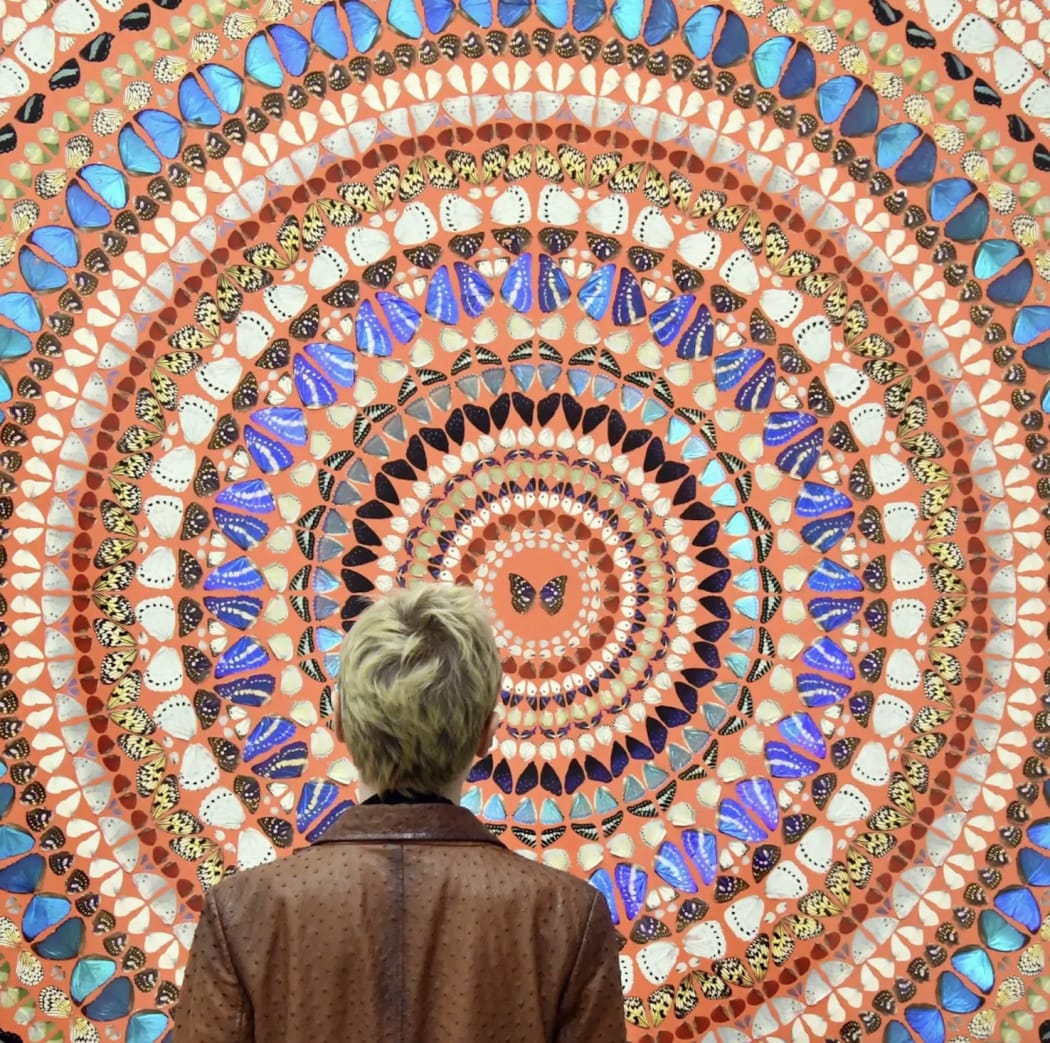
Few motifs recur in Damien Hirst’s oeuvre with the same frequency and conceptual weight as the butterfly. Both visually arresting and symbolically charged, the butterfly has served as a central element in his examination of beauty, mortality, and transformation for over three decades.
Hirst’s fascination with the subject began with his 1991 installation In and Out of Love, a seminal early work that invited viewers into a space where live butterflies hatched, moved freely, and completed their brief life cycles within the gallery. The installation blurred the line between artwork and environment, positioning life, and its inevitable conclusion, not just as subject matter but as medium. It was a gesture at once poetic and clinical, and it laid the groundwork for what would become a signature of Hirst’s practice: a merging of scientific detachment with aesthetic and emotional intensity.
In subsequent series such as Kaleidoscope, Hirst formalized his use of the butterfly in a more structured, painterly format. Wings are arranged into symmetrical, mandala-like patterns and encased in high-gloss lacquer, producing works that evoke both natural history specimens and stained-glass windows. These compositions, at once intricate and monumental, operate on several registers—inviting admiration for their visual harmony while simultaneously confronting the viewer with the undeniable reality of death, permanence, and materiality.
Importantly, Hirst’s butterflies are not symbolic abstractions but literal specimens. Their inclusion invites a sustained contemplation of the ethics and implications of using organic matter in art, a tension that Hirst neither avoids nor resolves. Instead, he leans into that discomfort, using it as a conceptual fulcrum. The wings are delicate, luminous, and precise, each one a reminder of life suspended, and of the human impulse to arrest beauty before it disappears.
Critical response to these works has often centered on this very duality: Are they celebrations of life, or appropriations of it? For Hirst, these questions appear less in need of answers than of visibility. His butterfly works invite viewers into a sustained reflection on temporality, loss, and the aestheticization of death.
Over time, these works have become among the most iconic in Hirst’s career, symbolic of his ability to combine visual seduction with conceptual rigor. They resonate not only for their immediate beauty, but for the questions they quietly insist upon: What do we preserve, and why? What is the cost of permanence? And how does art mediate our desire to hold on?